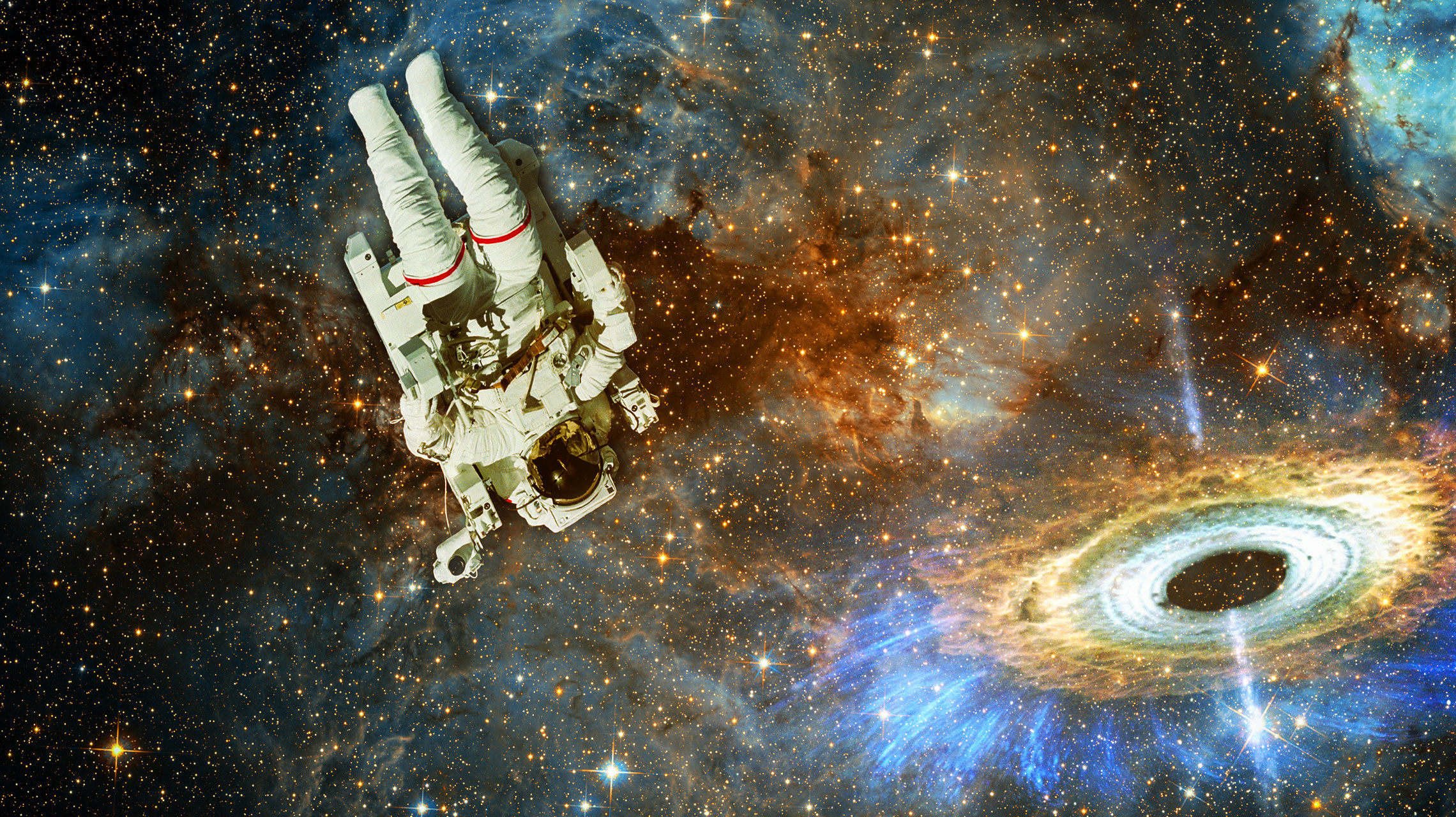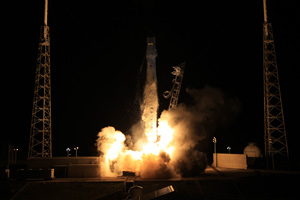Create a free profile to get unlimited access to exclusive videos, sweepstakes, and more!
SpaceX Falcon 9 lost an engine on the way up; Dragon on its way to ISS

Last night (Sunday October 7), SpaceX launched a Falcon 9 rocket with a Dragon capsule full of supplies on a mission to the International Space Station. The Dragon was deployed successfully (as were its solar panels to give it power) and it's on its way to ISS.
However, not everything went as planned. One of the nine Merlin engines powering the Falcon 9 had a failure 90 seconds into the flight. It's not clear what happened just yet, but there is pretty dramatic footage of the engine failure; in the slow motion video below you can see some sort of flash and puff of flame at the 30 second mark (I've set the video to start 22 seconds in):
You can see a bright spot glowing on the upper right engine, then what looks like shrapnel blowing back as well, so it appears something catastrophic happened to the engine. I can think of many things that could've caused this - a crack in the engine bell that failed when it got hot, a faulty valve, something in the pipes - but I'm just spitballing; hopefully the folks at SpaceX will be able to determine the cause from the engine telemetry.
[UPDATE: SpaceX issued the follow notice at 17:00 UTC today:
"Approximately one minute and 19 seconds into last nightâs launch, the Falcon 9 rocket detected an anomaly on one first stage engine. Initial data suggests that one of the rocketâs nine Merlin engines, Engine 1, lost pressure suddenly and an engine shutdown command was issued immediately. We know the engine did not explode, because we continued to receive data from it. Our review indicates that the fairing that protects the engine from aerodynamic loads ruptured due to the engine pressure release, and that none of Falcon 9âs other eight engines were impacted by this event. As designed, the flight computer then recomputed a new ascent profile in real time to ensure Dragonâs entry into orbit for subsequent rendezvous and berthing with the ISS. This was achieved, and there was no effect on Dragon or the cargo resupply mission. Falcon 9 did exactly what it was designed to do. Like the Saturn V, which experienced engine loss on two flights, Falcon 9 is designed to handle an engine out situation and still complete its mission."]
 Although this looks scary, the engine nozzles are coated with Kevlar to protect them specifically in case something like this occurs, so the other engines continued working. Also, the onboard computer immediately shut down the failed engine, and then on the fly - literally - recalculated all the needed changes to the thrust of the other engines to compensate. In the end, the first stage boost lasted an extra thirty seconds to cover for the failed engine. It's important again to note that the Dragon capsule was delivered on orbit and will rendezvous with ISS on Wednesday.
Although this looks scary, the engine nozzles are coated with Kevlar to protect them specifically in case something like this occurs, so the other engines continued working. Also, the onboard computer immediately shut down the failed engine, and then on the fly - literally - recalculated all the needed changes to the thrust of the other engines to compensate. In the end, the first stage boost lasted an extra thirty seconds to cover for the failed engine. It's important again to note that the Dragon capsule was delivered on orbit and will rendezvous with ISS on Wednesday.
Having said that, there may have been another problem as well: my friend Jonathan McDowell of Jonathan's Space Report is reporting the upper stage didn't make its second burn, so an Orbcomm satellite that was carried as a secondary payload didn't make the correct orbit. I don't have any more information about that, but I'll update this post when I hear more.
[UPDATE: ORBCOMM has confirmed the satellite was placed into the wrong orbit due to the engine failure. They, along with aerospace company Sierra Nevada, are looking into using the satellite's onboard propulsion system to raise the orbit.]
Elon Musk at SpaceX is expected to have an announcement later today about the launch. Again, I'll update this post as info comes in.
Tip o' the nose cone to AstroEngine for the alert about the video.


























